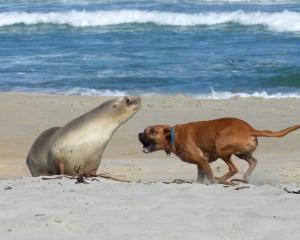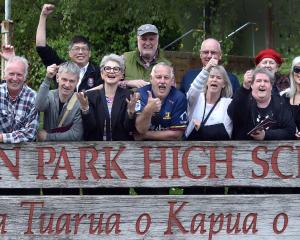
An international crowd-funding project is soaring towards success and will further protect the kakapo, a critically endangered flightless parrot.
University of Otago zoologist Bruce Robertson is a member of an international research team that aims to sequence the genomes of all 125 known living kakapo.
This will be ‘‘a world-first scientific achievement, as no-one has sequenced the genome of every surviving member of a species before'', he said.
Prof Robertson said the Kakapo 125 Genomes Project will provide detailed genetic information necessary to ‘‘minimise the loss of kakapo genetic diversity'' and promote health and productivity among surviving birds.
He was ‘‘incredibly excited'' about discovering a wealth of genomic information about all known surviving kakapo ‘‘and what it will mean for kakapo conservation''. A genomics approach to conservation would provide a ‘‘great boost'' to the recovery programme and help develop breeding strategies to retain variation in genes important for the species' persistence.
Prof Robertson was optimistic the crowd funding initiative would succeed, given that one key part of the effort had quickly raised more than $US32,000 ($NZ47,500) of the $US45,000 ($NZ66,800) sought.
Kakapo were appealing birds that had attracted passionate supporters overseas, including in the United States, who were happy to fund research to safeguard the species, he said.
The project is a collaboration between researchers from the Department of Conservation's Kakapo Recovery Group, Otago University, Duke University, in the United States, the Genetic Rescue Foundation and NZ Genomics Ltd, the latter based in the Otago University biochemistry department.
In a guest post on the Genetic Society of America's Genes to Genomes blog, Prof Robertson recalled that in 1996, when he started researching the conservation genetics of the kakapo (Strigops habroptilus), little was known of the kakapo genome.
He had then dreamed of having a kakapo's complete genome ‘‘at my fingertips''.
Twenty years later, that dream had been realised after the sequencing of the kakapo genome by researchers at Duke University and Pacific Biosciences of California, a biotechnology company, as part of the international Bird 10,000 genomes project.
Now, the dream is to sequence the genomes of all kakapo.












